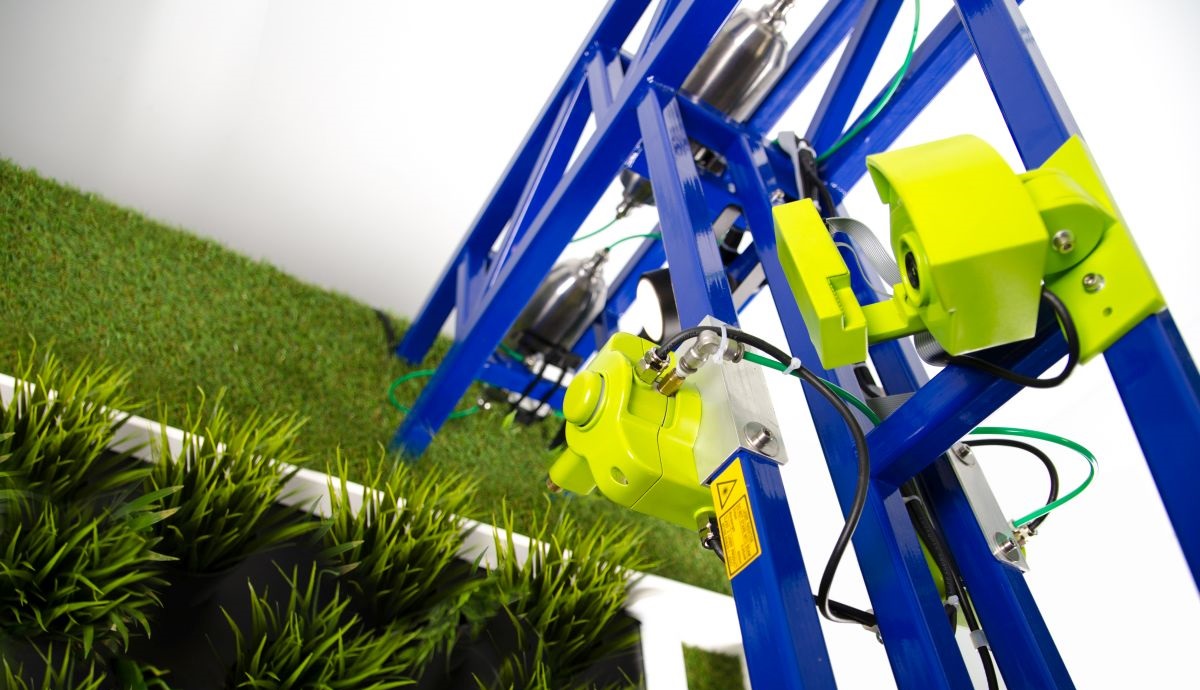
A new generation of spray technology from product design and development firm Cambridge Consultants has the potential to dramatically reduce the use of chemicals in agriculture – saving farmers money and helping to protect the environment. The volume of weedkiller, herbicides, insecticides and fungicides applied to crops could drop by more than 99%.
Doing more with less is one of the biggest challenges facing agribusiness as the industry strives to meet the challenge of feeding an additional two billion mouths by 2050. Alongside the demand for increased food production, environmental and economic factors are driving a need to cut the amount of chemicals used on crops.
Cambridge Consultants has combined its microfluidics expertise from medical product development with machine vision algorithms to enable active chemicals to be applied only where they’re needed – even when farm machinery is moving at speeds of more than 25 mph. The technology can instantly identify and target a specific leaf or bug from a height of 50cm.
A camera mounted on a tractor’s spray boom looks ahead at the crop and uses shape, size and colour to identify targets. They are then tracked as the vehicle approaches, the path and speed are calculated using probabilistic programming, and the position and timing details are passed to the dispensing system – which aims the nozzle and triggers the dispense valve.
“Just like clay pigeon shooting, the system has to ‘lead’ the target – the droplet has to be fired up to 50cm before the boom passes over the target,” said Niall Mottram, head of agrifood product development at Cambridge Consultants. “The droplet travels at five metres per second and takes one tenth of a second to hit the target. At full speed, the target passes under the nozzle in about three milliseconds.
“By targeting only specific foreign leaves or pests, the amount of chemicals dispensed is dramatically reduced – with drift and run-off virtually eliminated. The reduction of run-off is particularly crucial for the environment as it helps prevent ground water pollution by chemical pesticides.
“Our spray system design concept is the latest example of our creative application of cross-industry knowledge – something we’ve been practising for more than 50 years, developing breakthrough products for an enormous range of industries.”
